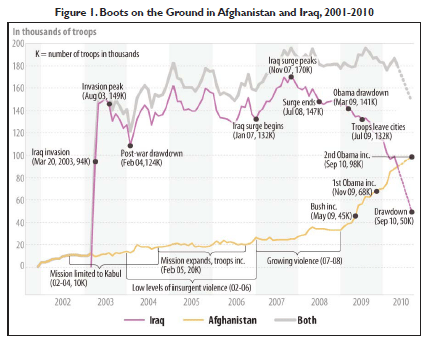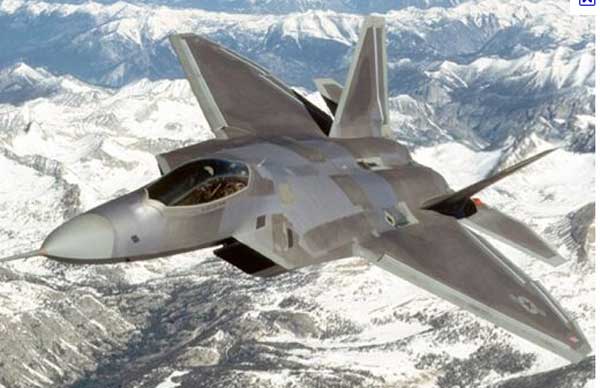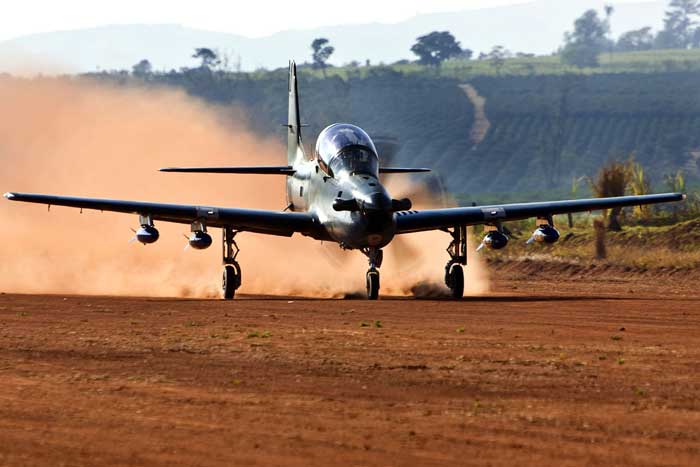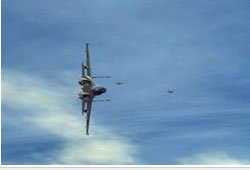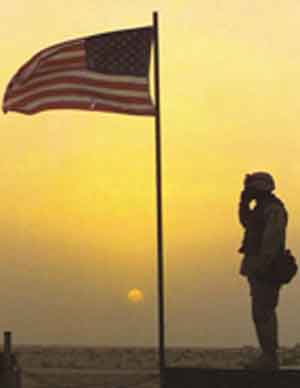When Second Line of Defense visited Spain in May 2010 for the Trade Media briefings given by Military Airbus, there was an opportunity to visit the A400M final assembly line and to see the 4th A400M under construction which can be seen in the slide show below. In addition Peter Scoffham gave a tour of the aircraft highlighting some of the design features of the aircraft. In a futher discussion with Scoffham, it was clear that the capabilities of the aircraft would have implications for concepts of operations. To follow up on the initial conversation, an interview was conducted in early July focusing on the relationship between design features of the aircraft and approaches to operations.
Peter Scoffham enjoyed a full career as a pilot in the Royal Air Force flying Vulcan bombers, Victor air-to-air refuelling tankers and VC10K tanker/transports. He has carried out numerous operational missions in conflicts in the Eastern Mediterranean, the South Atlantic, the Balkans and the Middle East, and has completed overseas tours in Cyprus, Canada and Belgium. While in Belgium he served as the NATO Branch Chief in the Supreme Headquarters Allied Powers Europe (SHAPE) with the primary responsibility for coordinating the international force deployments for both the Bosnia-Herzegovina and Kosovo operations in the mid-to-late1990s.
On leaving the RAF in August 2003, he joined Airbus Military in Toulouse as the Military Advisor for the A400M Airlifter programme. He is now Vice President Defence Capability Marketing for Airbus Military with the responsibility of marketing Airbus Military’s comprehensive product range of military airlifters and aerial refuelling tankers.
***
Building the 4th A400M, Sevilla, Spain, May 2010
SLD: As you gave us a tour, talk to me a little bit about the engines. You were talking about the staggering of the engines and the performance characteristics of the engines, which seems to me allows a lot of flexibility in the performance of this aircraft for the kinds of missions we’re talking about.
Peter Scoffham: People ask me: why did we go for a turbo prop rather than a turbo fan? And of course, the simple answer is that today’s turbo prop technology now allows an extremely powerful engine to be built, enabling equivalent high cruise altitudes and almost equivalenthigh cruise speeds as turbo fan airlifters. The powerplant technology now enables not only equivalent speeds to those of turbo jets but also retains all the tactical advantages that turboprops bring over jets.
For example, we all know that engine performance suffers whenoperating at high airfield elevations and at high temperatures. But jets suffer more than props. The other thing is, the most dangerous flight part or part of the flight profile for an aircraft is actually when it’s close to the ground, below say 5,000 feet because of MANPADs or man portable air defenses whether they be shoulder-held missile systems or small-arms fire.
Even though turbo jets like the C17 can descend extremely rapidly from high level, actually, there’s not much threat up there, but what a turbo fan or jet can’t do is plummet below 5,000 feet, because they accelerate too quickly, not having sufficient drag, so they can’t slow down sufficiently for a tactical landing.
Whereas aircraft like the C130 and A400M with large propellers can indeed do a rapid descent and you will have seen that at air shows, – a very impressive tactical descent, flair and touchdown from turbo prop aircraft. So in sum, the A400M powerplants bring the advantages of high speed and high altitude plus the tactical advantages of turbo prop engines.
SLD: And so the point on that is that the rapid rate of descent below 5,000 gives the pilot and the operational team a lot of flexibility to develop tactics for operations in the battle space?
Peter Scoffham: Absolutely. And although it still has to be tested through flight test, we are anticipating that the A400M in the final stages of descent below 5,000 feet, can have up to a 14 degree approach path which compares to something like 11.5 degree approach for a C-130 and about six, maybe six and a half for a C17.
So you can see that in terms of a tactical descent, either getting down to low level quickly or possibly landing in a hostile forward operating area, , those turboprop engines give a lot of survivability to the aircraft.
SLD: And that characteristic takes us back to the point we really started with which is that 10 years ago, air forces had a very different expectation of how they intended to use their airlifters than they do now. Now you expect them to be at the center of the battle space, and we no longer think of it as essentially a bus going from A to B; these tactical characteristics become far, far more significant as part of the integrated force in the battle space.
Peter Scoffham: Especially in hostile environments where forces such as those of the US and UK are operating, because there’s a growing desire to deliver heavy equipment directly to the point of effect or the point of need. This is where we are actually putting armored vehicles directly into the forward area where, the vehicles roll off the aircraft ramp, and if necessary, ready to open fire immediately. Whereas maybe 10 years ago, when we were still very much into the hub-and-spoke mentality of the 60s, 70s, and 80s, clearly that would not have been likely.
SLD: You were showing during the tour the undercarriage design and the landing flexibility of that design in addition to the benefits it brings in airdropping. As I remember it, you were looking at the numbers of wheels and also the design of the undercarriage which allows an interesting capability of the aircraft to be able to airdrop without really worrying about the cargo being sucked back behind the aircraft. Could you comment on this?
Peter Scoffham: There are two parts to this question. So let us consider the actual landing bit first, and then we’ll talk about the airdrop afterwards. The ability to land on rough unprepared and soft airstrips was a fundamental European requirement, and it gives tremendous utility for delivering heavy equipment to the “point- of-effect” or the “point- of- need”. The European Air Forces wanted a rapid response capability for a global presence or reach, but because the European nations couldn’t necessarily afford to have many types of airplanes with all the different characteristics of large, medium and small, they needed one aircraft to do all.
So, the then “Future Large Aircraft” as it was called in the 1990s, now the A400M, had to have at least as good as a tactical performance as the aircraft it was replacing, in this case, C130 Hercules and C160 Transals.
And in particular able to land on at least as soft as or indeed even softer surfaces than , those airplanes it was going to replace. We can achieve this because the A400M has 12 wheels, and it’s just simply the effect of increasing the aircraft’s footprint. The equivalent would be, shall we say, walking on a snowshoe on the snow, rather than just sinking in.
And one of other thing a small but nonetheless an important design feature, is that the nose wheels on the A400M, have been deliberately made slightly larger than traditional nose wheels so that on very soft surfaces they do not “dig in”.
SLD: Now to the question of the airdrop characteristics that the design of the aircraft allows?
Peter Scoffham: The main problem with any aircraft with a ramp is that the airflow behind the ramp tends to get sucked in, and if you were dropping paratroopers simultaneously, there’s a risk that they would collide with each other some 100 meters or 100 yards behind the aircraft.
So one of the things the designers had to do was to try to smooth out that airflow around the back of the airplane – and you’ll have seen how on many other airplanes there are strakes, wing fences, vortex generators and all sorts of other aerodynamic gizmos to try and overcome this problem.
But even with these aerodynamic gizmos, some airplanes have not been able to overcome the problem, and therefore have no option but to go for paratroops jumping alternatively from side doors, This means that the paratroops land over a much greater area which of course is not ideal. Accordingly, and to overcome this problem, the A400M wheel wells or wheel bays were designed specifically to have an aerodynamic shape resulting in a clean or lamina flow behind the aircraft – which in turn allowed paratroops to jump simultaneously without fear of colliding in the slipstream.
But there are other advantages to having these larger but aerodynamic wheel bays. First, apart from cleaning up the air around the back of the airplane, in that these larger wheel bays enable a step to be incorporated into their design so that the paratroops can now exit the aircraft more easily.
And secondly, by increasing the size of the wheel bays both forwards and backwards there are now two large spaces which can be used to accommodate systems which normally clutter up the inside of a freight bay. Accordingly, the freight bay is now clean or at least cleaner, which maximizes the available cargo space.
SLD: This allows you if you want to insert a special forces package, you could have a combination of actual special forces guys and kit dropped simultaneously from a small number of aircraft, which would be a huge advantage.
Peter Scoffham: There are two points here. The first thing is if we’re talking special forces and packages, the ramp on current in-service tactical airlifters, has a limiting load of about one metric tonne, although this reduces to about half-a-tonne if it is to be dropped from the ramp.But the advantage of the A400M is that its ramp can carry a six metric tonne payload and for airdropping as a part of a package a payload of four and a half metric tonnes can be dropped .
So in terms of a special forces insertion with a concurrent drop of equipment, you now have a situation where paratroops can jump at the same time out the side doors and a metric four and half tonne load can be dropped from the ramp. This, of course, gives them tremendous flexibility. And just while we’re talking Special Forces, there was a requirement for the high-altitude delivery of Special Forces. As an example of this civil airliners cruise at about 34-35,000 feet. But, the A400M is designed to fly one mile higher, at 40,000 feet, then open the ramp, and enable special forces to jump with all of their specialist kit . At the moment, there is no other aircraft capable of doing that.
SLD: Your aircraft seems to me to be well designed for the new operational scenarios in which forces expect the airlifter to be part of the operational battlespace.
Peter Scoffham: Absolutely. Whereas in the past, as you and I well know, we always say you develop kit to fight the last war, and the next war is never the same.– well, pleasingly, the A400M is not only able to meet today’s requirements but it is versatile and flexible enough to meet evolving requirements and hence it will be ideal for future operations as well.
SLD: One of the things I was struck with when we were watching the video of the testing of the aircraft was the testing involving engine stalling. And what impressed me about that was inherent basic stability of the aircraft. This has a tremendous potential for allowing a customer to put on the aircraft things that I can jettison out of the back that allows me to get very innovative over the next 40 years.
Whether they be cruise missiles, whether they be UAVs or various robotic elements, it seems to me that the basic aircraft given the inherent stability of the aircraft and the size of the aircraft, and the ability to operate in a battle space, it gives a customer, a lot of flexibility in how to use this over the next 40 years.
Peter Scoffham: I’ve flown large airplanes for most of my life, and we often say flying a large airplane is like aiming a wet sponge, it doesn’t react like a fighter!, So it was interestingly yesterday, when we had a presentation by our chief test pilot and he specifically mentioned the A400M’s aerodynamic stability.
One of the videos we saw was the A400M flying in formation. And it was absolutely astonishing how steady the airplanes in formation were, – re-affirmed by the chief test pilot who said he was astonished how on the first flight information, the aircraft performed so well.
During a flight test programme my understanding is the first couple of hundred hours or so on any test program is all to do with validating aerodynamic performance. And something which has been so pleasing about the test program to date is that the aerodynamic design of the A400M has been verified. So aerodynamically, the A400M really is proving to be a great success already.
Now, moving onto possible A400M’s variants. The big advantage of any big airplane like this, of course, is that it can have many, many functional roles. And if you think of the Hercules over the last 50 or 60 years, the number of variants of Hercules shows how such an aircraft can be modified . But at the moment, – and I am sure you’ll understand this -, we are totally and utterly focused on meeting the European launch contract
But there is actually no reason why when that launch contract has been largely satisfied, we cannot concentrate on maximizing the undoubted flexibility of this airplane, along the lines that you stated.
SLD: The basic aircraft will be in operation for many years, and given its inherent flexibility, represents a key element for 21st century air capability.
Peter Scoffham: I would not only agree with you, I would reinforce it by saying that if you consider that airplanes built in the 1960s are still flying today some 40 years or even 50 years on, then considering the use today of modern materials, linked to modern maintenance techniques, then there is no reason why the A400M should not be around for 60, 70 or even 80 years from now. And when you consider the potentially long life of the A400M and the potential flexibility for it to undertake many, many variants, this aircraft is a tremendously good investment for nations.
SLD: You were talking a little bit earlier about the aid missions. Talk to me a little bit about the capability of the aircraft to allow you to work in a more flexible environment so that you could operate eight missions in a variety of spectrums. Because at the end of the day what’s often not realized is aid is going to areas that have had devastation by definition. And that means that you don’t have optimal airfields, optimal landing conditions.
Peter Scoffham: Absolutely. Now, obviously as military men, our primary focus is on military operations. But if we were to look at it from a political point of view, or maybe from the point-of-view of the benefit it could bring to society , the A400M is attractive to nations because More and
more emphasis is now being put onto nation’s ability to play its part on the international world stage of civil assistance. Sometimes we call those civic missions. And the classic example of that, just as you say, is providing aid to the devastated areas caused by earthquakes, typhoons, flooding or other natural disasters.
The key here actually parallels the A400M’s support of forward operations for military forces. in the past, people think of aid to a disaster area as being supplying blankets, food and bottled water. Actually, the Tsunami of December of 2004 made us all realize , that if buildings are collapsing on people, like the earthquakes in Pakistan, like in Haiti a few months ago, or indeed in like Sumatra of late last year. What you need in the first few hours of any rescue mission is very heavy engineering equipment to lift that masonry off the people who are trapped beneath. And you’ve got to do it very quickly; you’re talking about 24 or maybe 36 hours maximum, to get that heavy engineering equipment to the point of disaster. And that means you can’t send it by boat, you can’t send it by train, and you can’t even really send it by very large aircraft, because they need the facilities of well-equipped large airfields which are often a considerable distance from the disaster area..
So, the big advantage of an aircraft like the A400M, is that you can now deliver that big, heavy engineering equipment, directly to the devastated area and you’ll give those people who are trapped in that 24-hour window- of- opportunity a much, much greater chance of survival.
———–
*** Posted on July 15th, 2010
Leopard 2 (www.forces.gc.ca)
Arrival of the first Canadian Leopard 2A6M CAN in Afghanistan in 2007 Credit: www.army.forces.gc.ca



